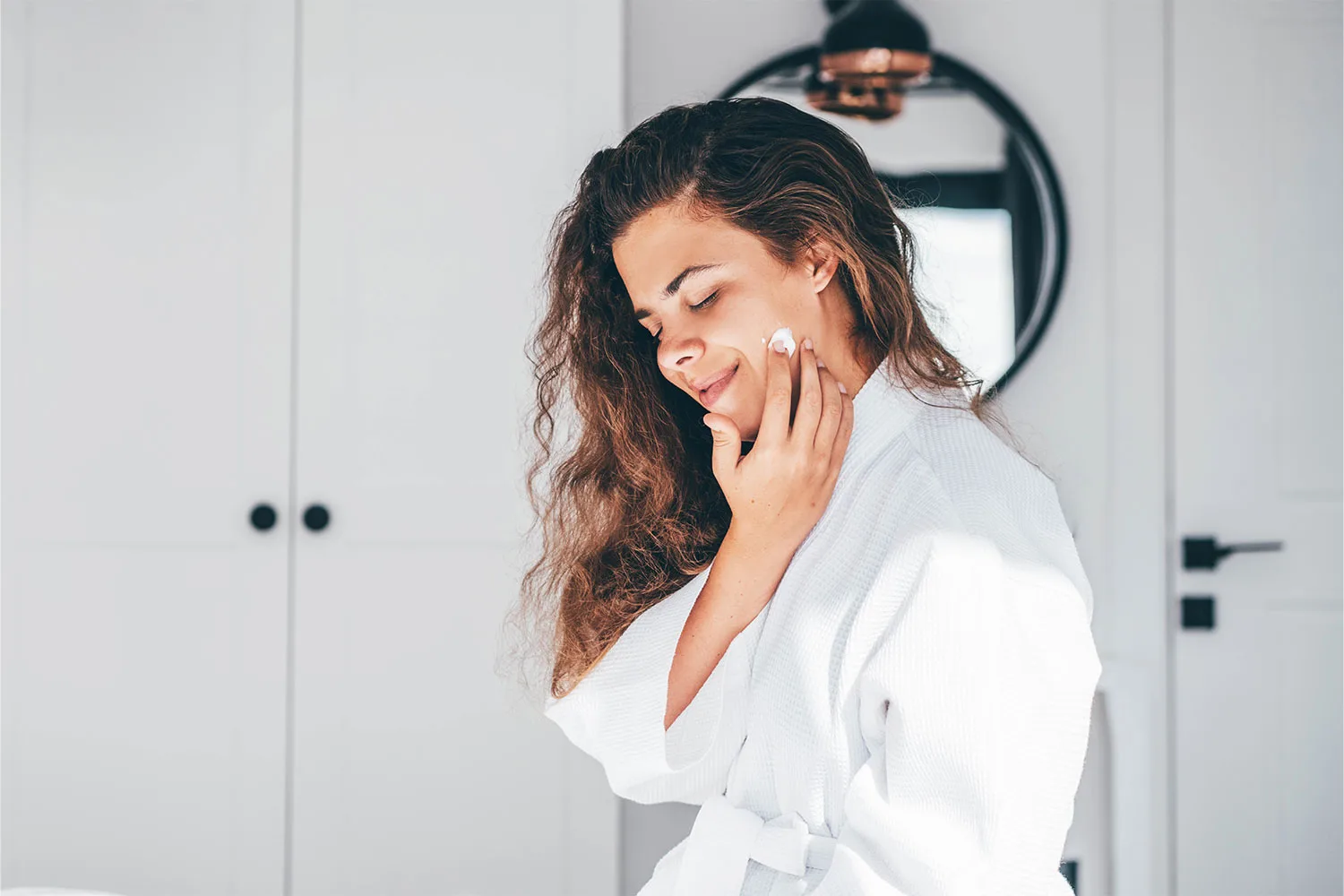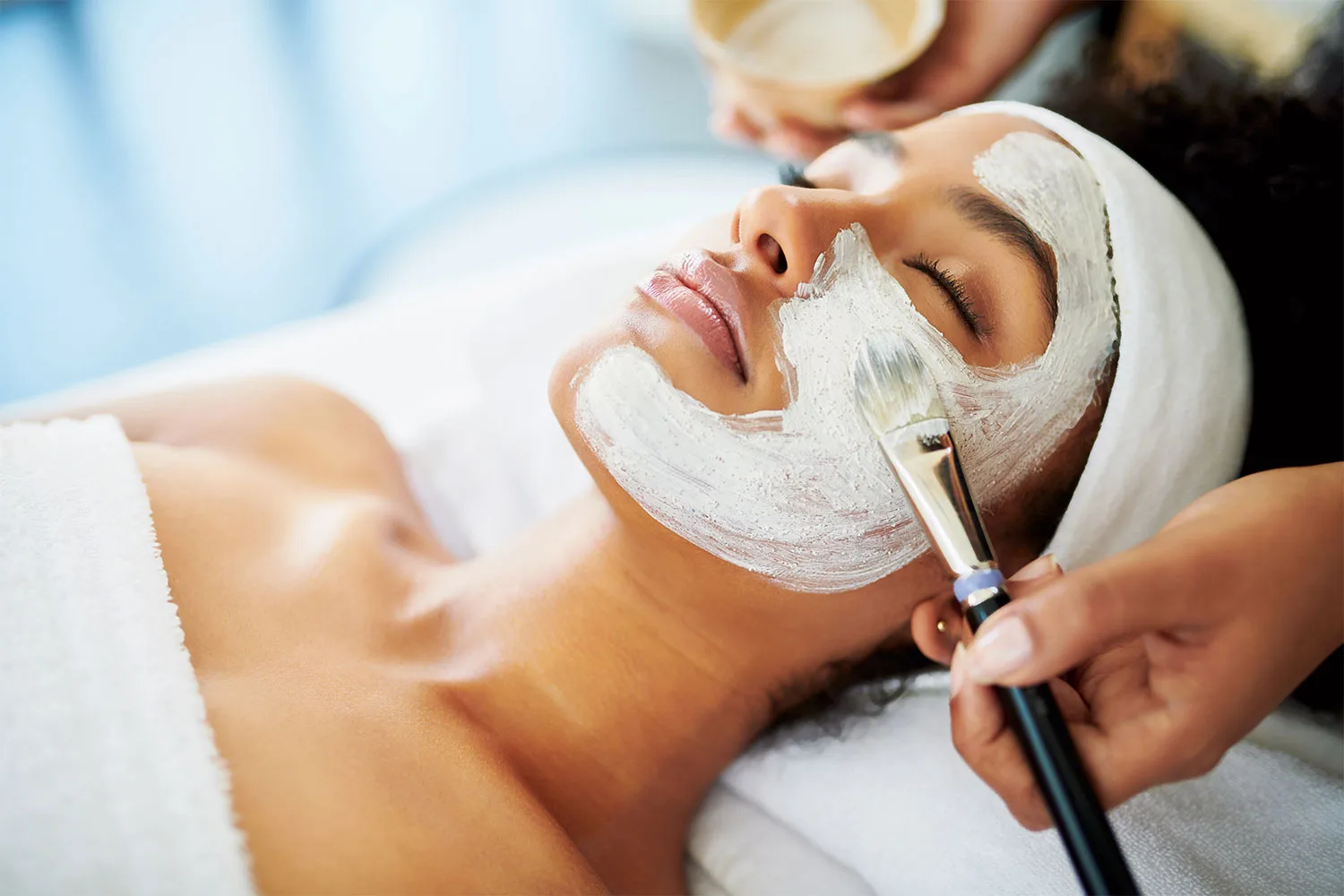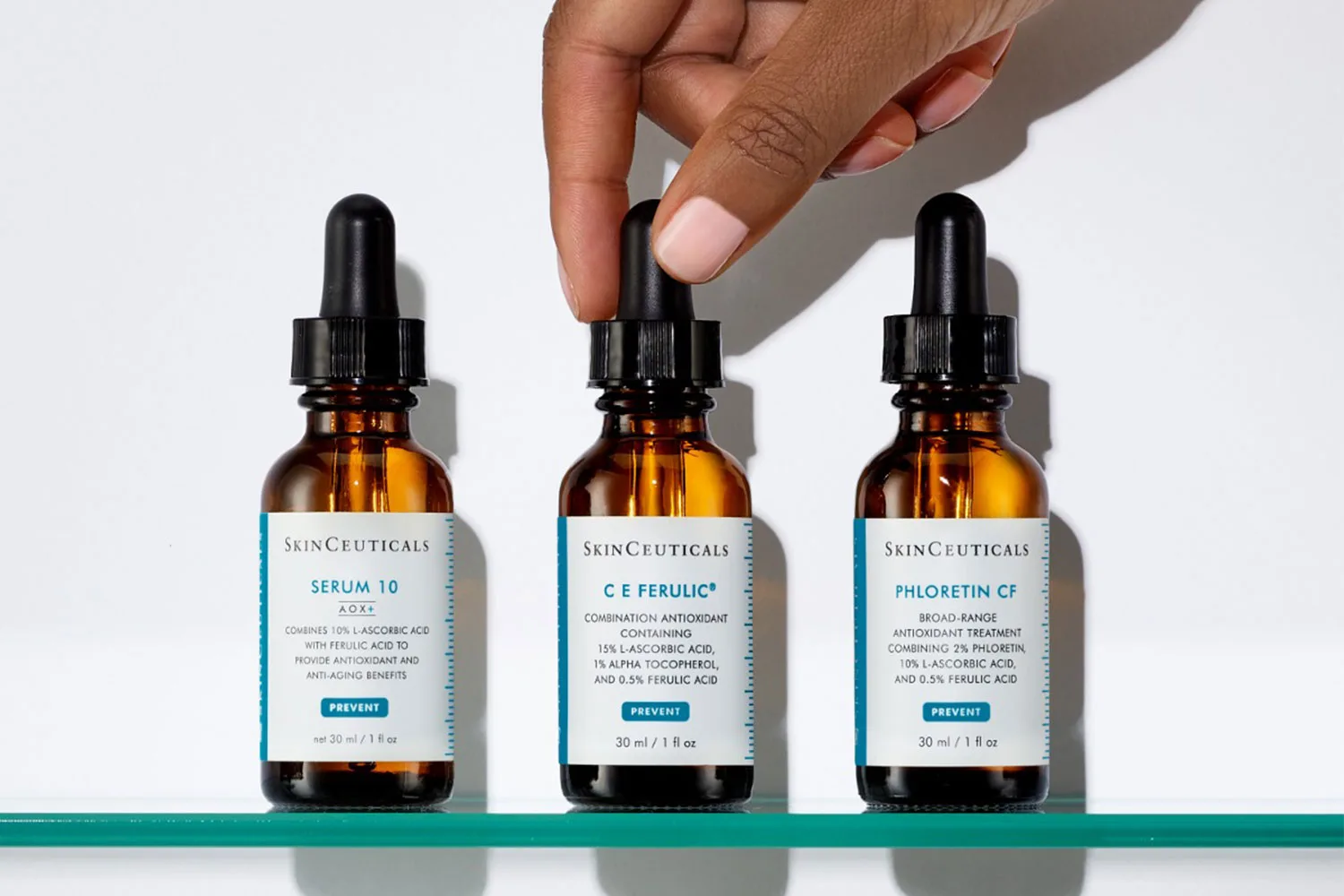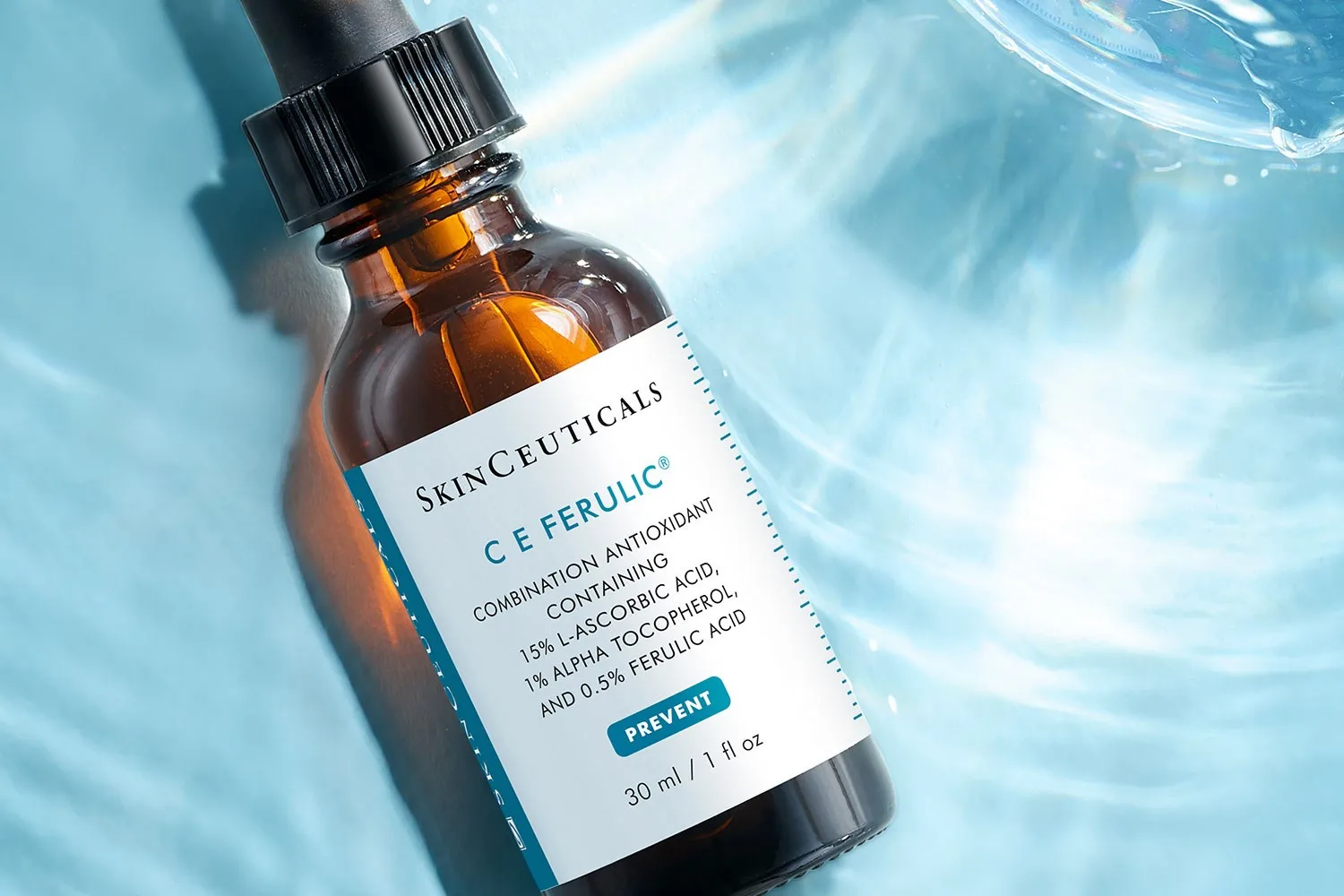If there’s one thing any beauty lover knows, it’s that skincare is the most important step in any makeup routine. But figuring out what the best skin treatments are can be hard.
The last few years have seen us move us away from the notion that spending time (and money) on our skin is a frivolous activity, and towards the understanding that looking after our skin is an integral part of any self-care ritual.
Despite this, the world of skincare and professional skin treatments can still seem overwhelming, with the options and therapies on offer constantly changing and evolving.
So, we caught up with some of the best in the business—Dr Tania Romano, Education and Scientific Communications Manager, and Renate Stewart, Education Manager, both from SkinCeuticals—to help guide us through the dos and don’ts of the most popular treatments of the moment.
Check out our Q&A with Dr Tania Romano in the video above.
Reasons To Go In-Clinic For Skin Treatments
The biggest question we may ask ourselves, is why in-clinic skincare treatments are so popular, and do we need to incorporate them into our routines?
For Dr Romano, the answer is simple: an in-clinic treatment can enhance what we’re already doing at home.

“You’re going to be able to achieve results through in-clinic treatments that you won’t see with just using skincare at home,” she tells marie claire Australia.
“Depending on the treatment that you are having, in consultation with your skin provider, will depend on how often you get that treatment, or which treatments you would need for your skin.
“It’s super important to listen to your clinician and have a really good consultation with them before embarking on any treatment, because they’ll be in the best position to analyse your skin and know what’s best for you.”
Three Popular Skin Treatments In Australia
Dr Romano says most people are seeking injectables, chemical peels and microneedling. Each of these treatments utilise different techniques and offer different results, so the best skin treatment for one person may be very different for someone else.
“A lot of people would be familiar with different injectable treatments,” she says.
“There are things such as neurotoxins, which help with the appearance of fine lines and wrinkles by reducing the activity of the underlying muscle so that the lines aren’t apparent in the skin.
“You can also have other injectables such as dermal fillers, which are able to increase volume where there’s a loss of volume in the skin or help provide definition in the face where it’s needed.”
For those wanting to exfoliate away dead skin, chemical peels are the go-to.

“There are many different types of chemical peels, so depending on your skin type and what your particular concern is would determine which peel is best for you,” says Dr Romano.
“If you’ve got problems with dry skin or pigmentation, or some very fine lines that can be helped and their appearance minimised just by a really good exfoliation, that’s where something like a chemical peel is going to be something that you can do.”
RELATED: What You Need To Know About Dermabrasion (And Alternatives)
She also says microneedling is rising in popularity in clinics across Australia.
“Very, very tiny, sterile needles get injected into the face,” she says.
“And what that does is cause a little bit of micro damage in the skin. During the healing response, we will naturally get collagen being produced. By causing those little micro tears and micro damage channels in the skin, we’re stimulating collagen.
“It’s something that you want to start off doing sort of a little bit earlier and do it regularly throughout your life to help produce that collagen. It’s more of a long-term treatment for the prevention of lines and wrinkles.”
Preparing Your Skin For Treatments
While in-clinic treatments can boost our skin’s health and help address specific concerns, the best results will come from doing the correct pre- and post- treatment care from home.
“A lot of the clinicians that I work with will often say that 70 per cent of the work is actually done with your at-home skincare, and then it’s those treatments in-clinic that give you that extra boost,” Dr Romano says.
“Having really well-primed skin before your treatment gives you the best results and lower downtime after the treatment because your skin’s healthy, it repairs quicker, and you get those results quicker as well.”
According to SkinCeuticals’ Education Manager, Renate Stewart, when it comes to injectables, the health of the skin needs to be at its very best before treatment begins.
“Injectables treat skin from within, but if superficial hydration and barrier integrity is compromised, the complexion can still look dull,” she says.
“In the morning, gently cleanse, apply a protective antioxidant and adequate sun protection.
“At night, gently cleanse and focus on rejuvenation by alternating retinol and hydroxy acids, along with a moisturiser to stimulate collagen and smooth texture.”

With a strong following, SkinCeuticals are known as the “antioxidant authority”. The brand has over 30 years of research on the effects of antioxidants on the skin and were the first to stabilise Vitamin C for use in skincare.
Their range of Vitamin C serums are suitable for all skin types, and have been combined with other antioxidants in formulas that target specific skin concerns with powerful environmental protection and proven brightening and firming results.
Post-injectable treatment, Stewart says that most skincare routines can be continued as usual. But care should be taken to apply products, like Vitamin C serums, with minimal pressure for a few days given injection sites may feel more sensitive or dry.
When it comes to chemicals peels, Stewart recommends including hydroxy acids to target superficial build up before treatment, so the professional peel can penetrate more deeply and deliver greater results.
“Generally, exfoliating products should not be used at least three days prior and post peel to enhance healing and reduce downtime,” she says.
“Post-peel, the skin is more susceptible to environmental damage, meaning antioxidant protection and sunscreen is a must.”
Dr Romano recommends SkinCeuticals’ C E Ferulic Vitamin C Serum to prime the skin to be healthy and better find (and neutralise) free radicals prior to any peel.
“It’s a core product for a reason,” she says.
“If we are getting prepared for exfoliation, we want to be able to have our skin nice and primed for that. Using something like C E Ferulic where you’re getting Vitamin C and E together is ideal.”

Prior to microneedling, Stewart says skin needs to be in an “optimal healing state”.
“If inflammation is present, recovery will be slower, diminishing results,” she says.
“To strengthen the skin pre-treatment, use anti-inflammatory actives like Vitamin C and Vitamin B, a moisturiser rich in peptides and ample sun protection.
“Post treatment, the skin will look and feel as if it’s sunburnt. This may persist for a few days after the treatment, depending on the needle depth. The first 48 hours are important: we must use minimal skincare and ensure it is extremely soothing and lightweight.
“Avoid makeup, use physical sun protection and keep the skin hydrated with a water-based hyaluronic serum.”
What We Should All Be Doing For Our Skin
For Dr Romano, there’s one step that should never be missed when it comes to caring for our skin before and after a professional treatment: a broad protection sunscreen.
“Everybody should be using a sunscreen…definitely an SPF 50 plus,” she says,
“After your treatment, make sure you talk to your practitioner about when you can use sunscreen again. For some treatments, it might be immediately, others you might need to wait a couple of days depending on the condition of the skin.
“But using that SPF is going to be your number one protection against UV damage and things in the environment that are going to cause skin damage and pigmentation, which is one of the main reasons people go into clinics for have treatments.
“Prevention is always better than the cure.”
For more details on the dos and don’ts of the most popular skin treatments, check out the video above.
Sponsored by SkinCeuticals.










